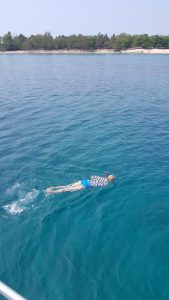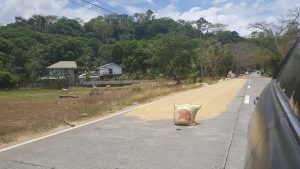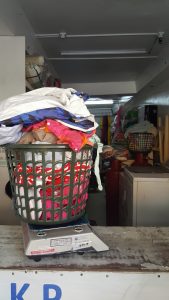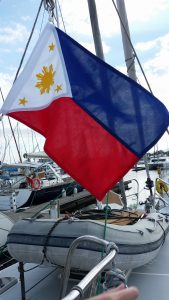Be forewarned that this very long post is all about radios and satellite communications equipment, which some may find boring (I wish it actually was boring and straightforward, but this is a notoriously complicated field, which our experiences are proof of!).
Perhaps naively, after hours and hours of installation work (credits to Mr Finn) and programming (that is me) we thought we were sorted in respect of our radio and communications gear…Well, now that we have had spare time on our hands, we’ve realised that we are not quite there with either of our two long-distance communications devices.
Firstly, there is our long-distance radio (for those who do not understand boat communications, I’ll add that we also have a short-distance radio on the boat, but its range is only around 60 nautical miles, so it will do us no good when we are far from land and other boats). We are able to receive both voice communications and digital selective calls on our long-range radio, so we thought everything was fine, until we made a call to Brunei Bay Radio to try out our pactor modem set-up. A pactor modem basically works like the modems that we had in the nineties to connect to one another (remember the good old days before the internet?), which make screeching sounds and then almost magically – although very slowly – churn out text that the person on the other end has written. So it is a fantastic piece of kit to have on board, assuming you get it to work! Our computer nicely speaks with our pactor modem, which in turn nicely controls the long-range radio. However, despite trying out several frequencies and double-checking radio propagation statistics (don’t ask!), the coast radio station never answered. That was hit number one, but we figured that that could still be down to Hong Kong “noise” on the radio frequencies. However, then we managed to schedule a DSC test call with the Hong Kong Maritime Rescue Coordination Centre (they don’t routinely allow such tests, so we are really grateful that they helped us out). This was a test call on the real distress frequency, and having made sure we got the settings correct so that we didn’t make a real emergency call, we sent off our DSC call and started to wait for the HKMRCC acknowledgement, the whole family eagerly gathered around our navigation station to witness the moment. To our huge disappointment, the acknowledgement never came, meaning that they did not receive our DSC call. That was hit number two, and we are now rather puzzled as to what the error might be, particularly considering that we can happily receive DSC calls ourselves – the latest proof of which is a distress call received from an unknown source this very morning (see photo)!
Hit number three came in the way of our Inmarsat Mini-C equipment. This is in simplistic terms a satellite-based messaging system. We can really nicely receive meteorological and navigational warnings through the system, so thought everything was ok. However, we’ve now realised that our routine messages (such as satellite emails, with the help of which we could potentially update this blog while on the ocean) are not going through. Link tests, which test the set-up all the way from our mobile station through to the satellite and onwards to a land earth station, show no problems, so we are again unsure as to what the issue can be.
None of this will prevent us from taking off (Lil Sis finishes her music event tomorrow, after which we are SO READY to go, weather permitting!), since we are getting the weather and navigational data, have got several duly-registered satellite beacons to get distress messages out and also have a handheld satellite phone with which to send reports to our emergency contacts. Distress messages on the Inmarsat Mini-C system are also likely to go through (the problem is probably only with routine messages). However, the communication problems will ensure that there is no break from the boat work, which in all honesty we would have rather needed. We are starting to feel like we are in need of a holiday…


